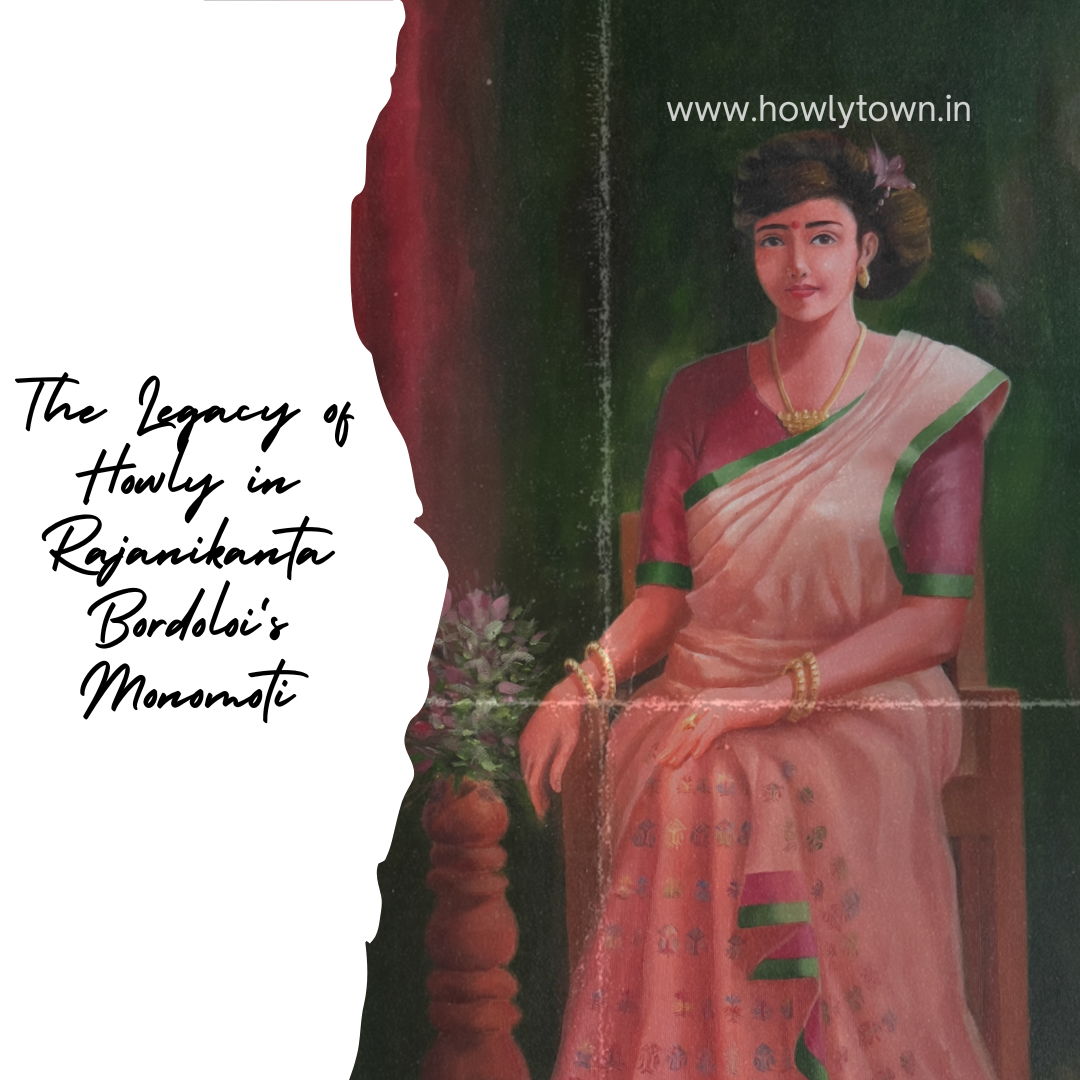.png?ts=1763611145)
howlytown.in
The Legacy of Howly in Rajanikanta Bordoloi's Monomoti

The Assamese novel Monomoti, published in 1900, stands as a literary milestone penned by the eminent novelist Rajanikanta Bordoloi—revered as the Emperor of Novels in Assamese literature. This iconic work captures the cultural and social essence of Assam during the third Burmese invasion, portraying the lifestyle, values, and ethos of the time with unflinching realism.
Between 1889 and 1918, while serving as a Sub-Deputy Collector, Rajanikanta Bordoloi had the rare privilege of closely observing various historically rich locales in Assam. These included Howly—the then royal capital of Chandi Barua—and the surrounding areas like Jogirpam, Morhalakanta Barua’s estate, Hadirachaki, and Mainabari, which were deeply entrenched in the region's historical memory. These observations deeply informed his literary works.
The novel Monomoti artistically immortalizes Chandi Barua’s patriotic fervor, valor, and his revolutionary ideals. His fierce love for his homeland and his resistance against foreign rule find literary embodiment through the characterizations and events in the story. Characters like Halakanta Barua reflect the archetype of noble dissent, whose ultimate fate marks the tragic cost of standing against colonial oppression. These themes still resonate today, serving as timeless metaphors for sacrifice and integrity.
Importantly, Monomoti is not merely a fictional tale. Several historical sources and records affirm that the narrative draws from real incidents. Scholar Brajanath Sharma noted that the brutal killing of Chandi Barua at Mainabari was not just literary drama, but a grim historical truth. These events are backed by archival evidence, including old records that document the atrocities committed during that time.
At the heart of this historical-literary journey lies a remarkable truth: Howly’s own Halapakuri is the very place where Monomoti was written. This unassuming location holds monumental literary significance. Had this novel not been created, much of Howly’s glorious past might have remained in obscurity. Thanks to Monomoti, Howly steps into the light of literary and historical prominence—its identity etched forever in Assamese consciousness.